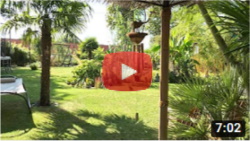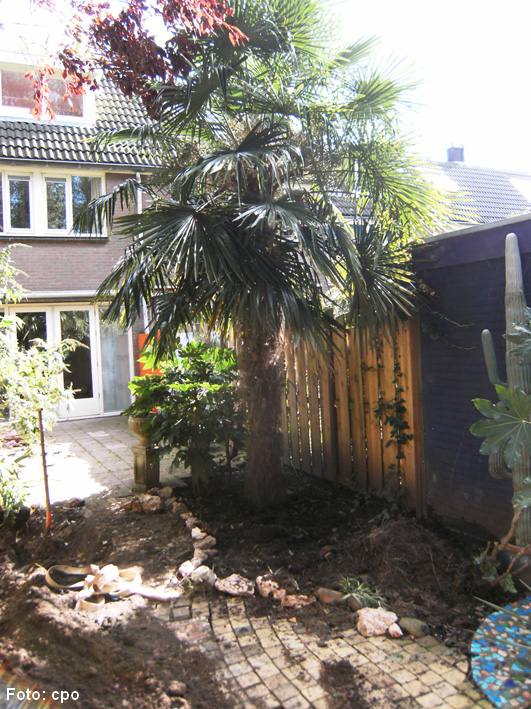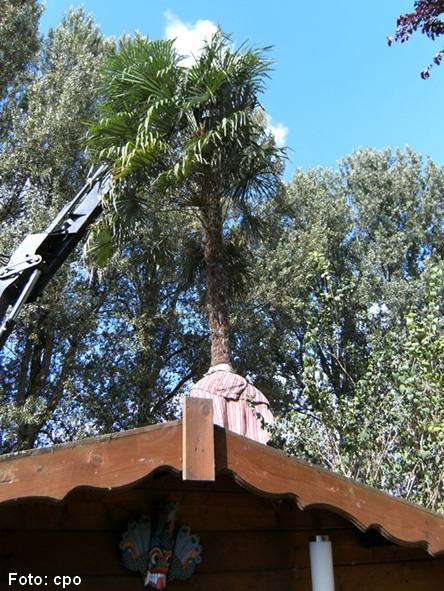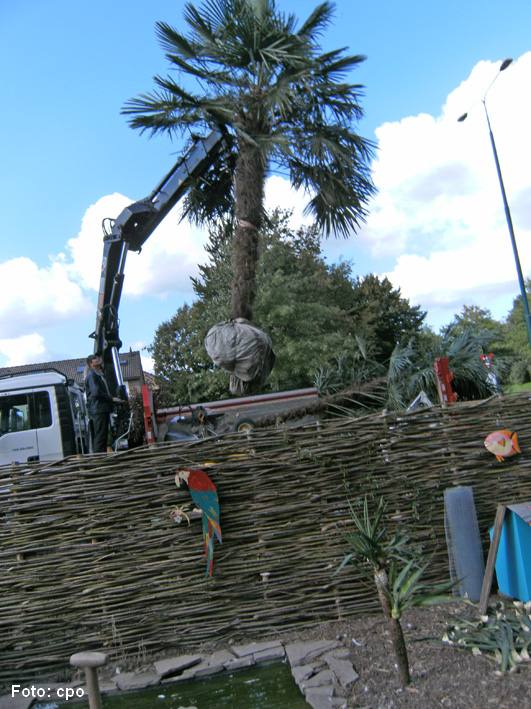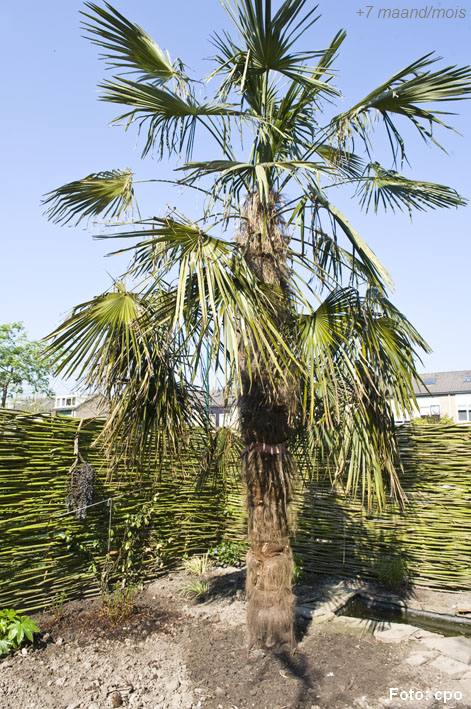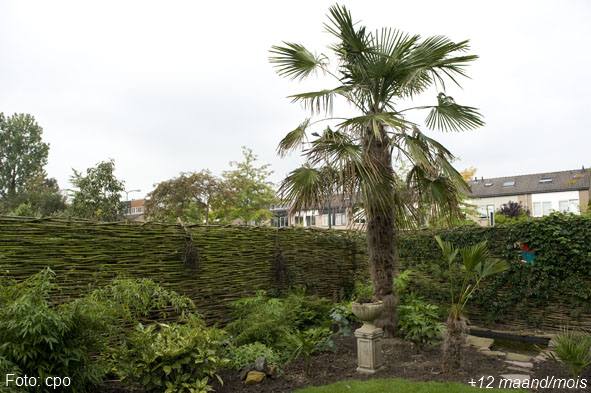Moving into a new house, redesigning the garden, a bargain, … There are several reasons to think of to have to transplant a palm tree. But how do you start such an operation and what should you take into account? In this article you will find everything you need to know!
Preparation
Whenever transplanting becomes interesting, it’s usually because it concerns palms of a decent size. The smaller ones are not such a loose and are easy to find. However, transplanting a big palm can be quite a big deal. Especially due to the high weight of the palm and the root ball. To get an idea of the weight you can try move around a comparable size of palm in the local garden center. Don’t be surprised that you’ll also need some mechanical help as well to be able the lift the palm in addition to the manpower that was already needed for digging the palm out. 3 strong adults to clear this kind of job won’t be a luxury.
When to move?
If possible, you should ideally transplant the palm in the beginning of the season which is april-mai. This way the palm tree doesn’t have to cope with frost besides to the damage already taken by the transplantation.
The transplantation: digging out
Cutting the roots all way around some time before, as is done with deciduous trees, isn’t advised for palm trees. Just dig the palm out in one day and plant it as soon as you can on the new location. Palm roots carries more in depth than in width and you can approximately say that the roots won’t be much wider than the crowns diameter. It would probable be impossible to take out the whole root ball but try to save as much as you can. This way the palm tree should suffer the less. Then wrap up the root ball to keep everything together and prevent it from drying out completely.
Tip! It can be really helpful to tie up all the leaves together. This way you can move around more freely.
NB. An other method, suitable when planning the transplantation more ahead, is to split the digging out part in to separate moments. First you dig a trench all the way around at about ~20/30 cm from the stem. Then place a wire mesh in this trench and fill up with loose peat. Wait a couple of months for the palm to recover from this partial damage and then dig out the palm completely. There will not be any roots in the peat yet so the digging out would be more easy. Another advantage is that the damaging is more spread in time with still having non affected parts to cope beter with the impact.
The transplantation: the transport
When transporting the palm it’s advised to tie up all the leaves together and to cover the crown. Not only to prevent the leaves from wind damage but also to limite as much as possible the evaporation and thus dehydration.
The transplantation: the new spot
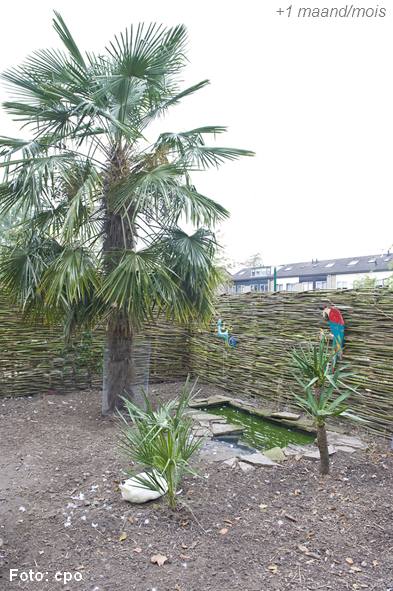 Is is wisely to plant the palm as soon as possible on its new location. Dig out a hole large enough for the root ball to fit easily and some extra space for some rich soil and a fertilizer which stimulates root development. Don’t open up the roots as you would do when planting regular plants but leave the root ball be.
Is is wisely to plant the palm as soon as possible on its new location. Dig out a hole large enough for the root ball to fit easily and some extra space for some rich soil and a fertilizer which stimulates root development. Don’t open up the roots as you would do when planting regular plants but leave the root ball be.
If you don’t have the possibility to plant the palm directly in the new garden you can eventually plant the palm temporarily in a container. Logically you would have to cut of even more roots to make to root ball fit into the pot. Of course this will generate only more stress for the palm so make sure to place it somewhere well protected afterwards.
During the first months it could be wise to support the palm with some poles or lines. This way the palm won’t move at all and the roots can redevelop without being slightly moved.
For further planting advice you can read our article “How to plant a palm tree in your garden“
The transplantation: aftercare and degradation
Keep in mind that the transplanted palm can fall back or worse die due to the transplantation. It’s quite an operation after all! Water often and generously to prevent the palm from dehydration as the damaged roots won’t function optimally for some time. Water especially on sunny and windy days. You may even want to keep the leaves tied up the first months if you are in a windy area.
© La Palmeraie
photos: fotograafinutrecht.com
also see: Transplanting a palm tree: a reader’s experience!




